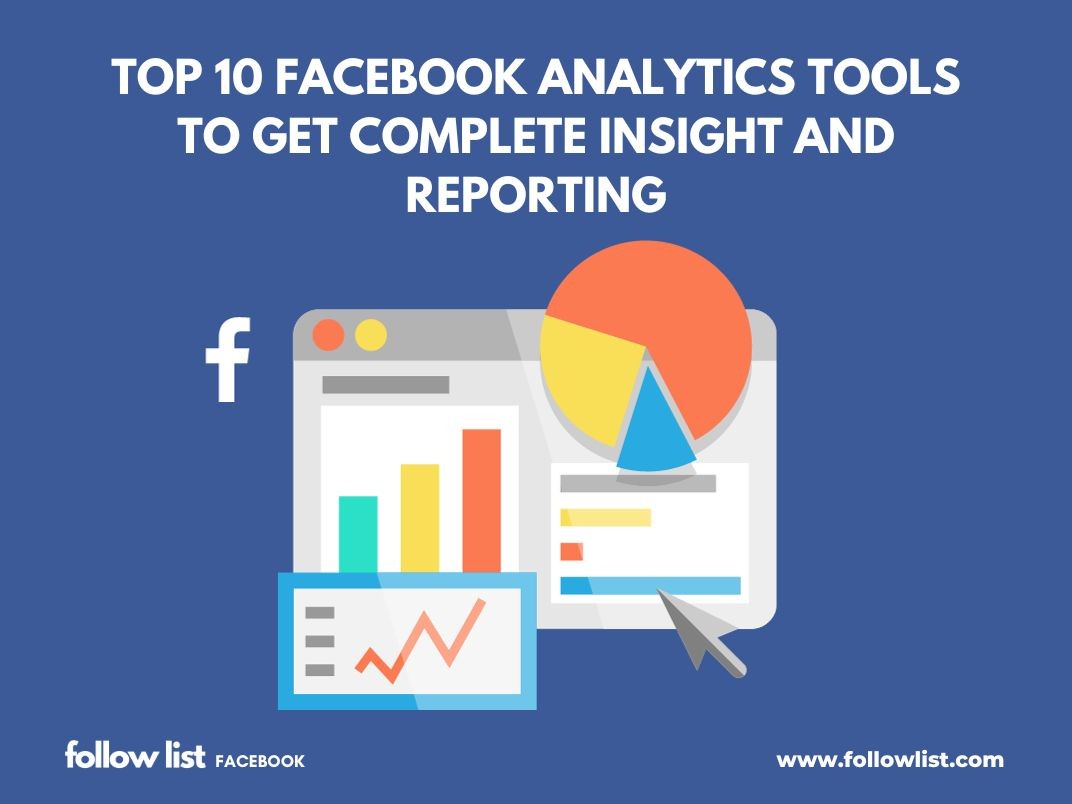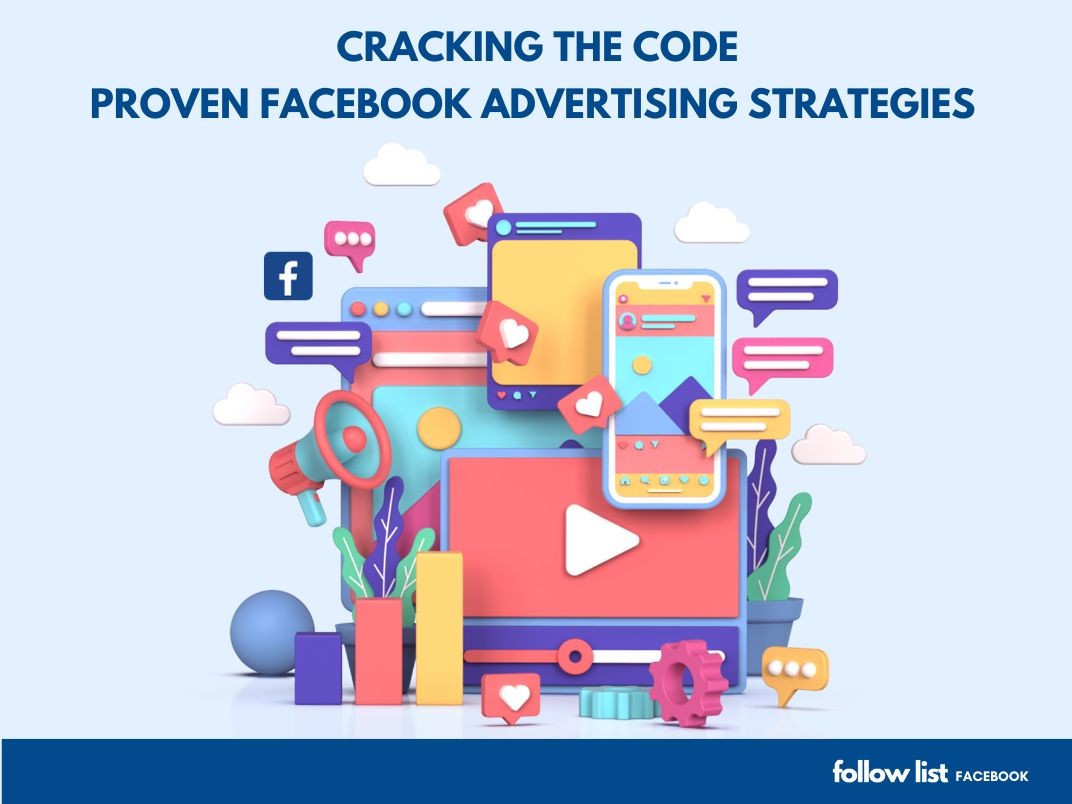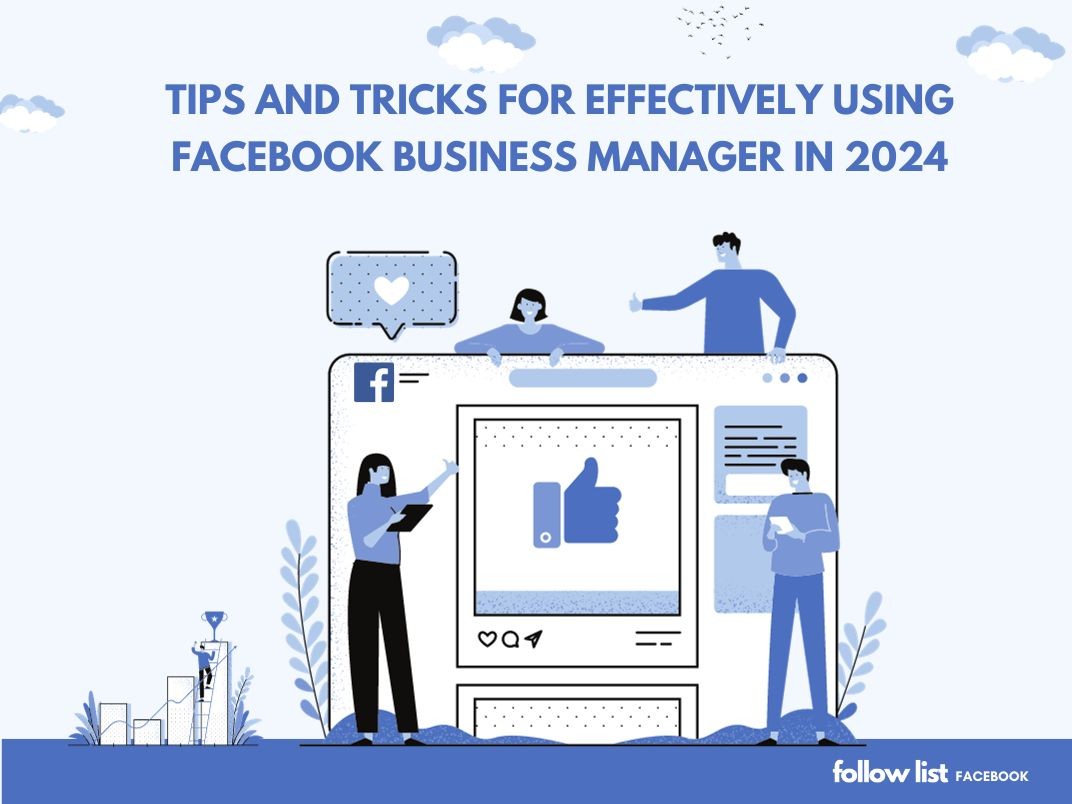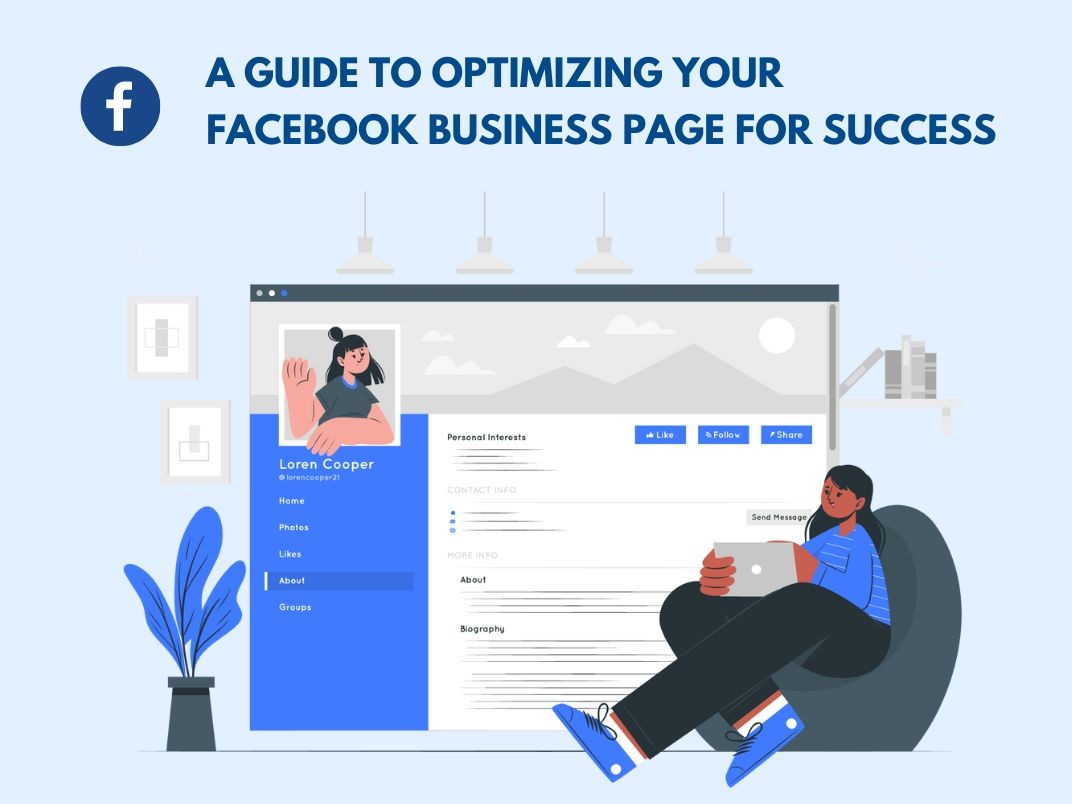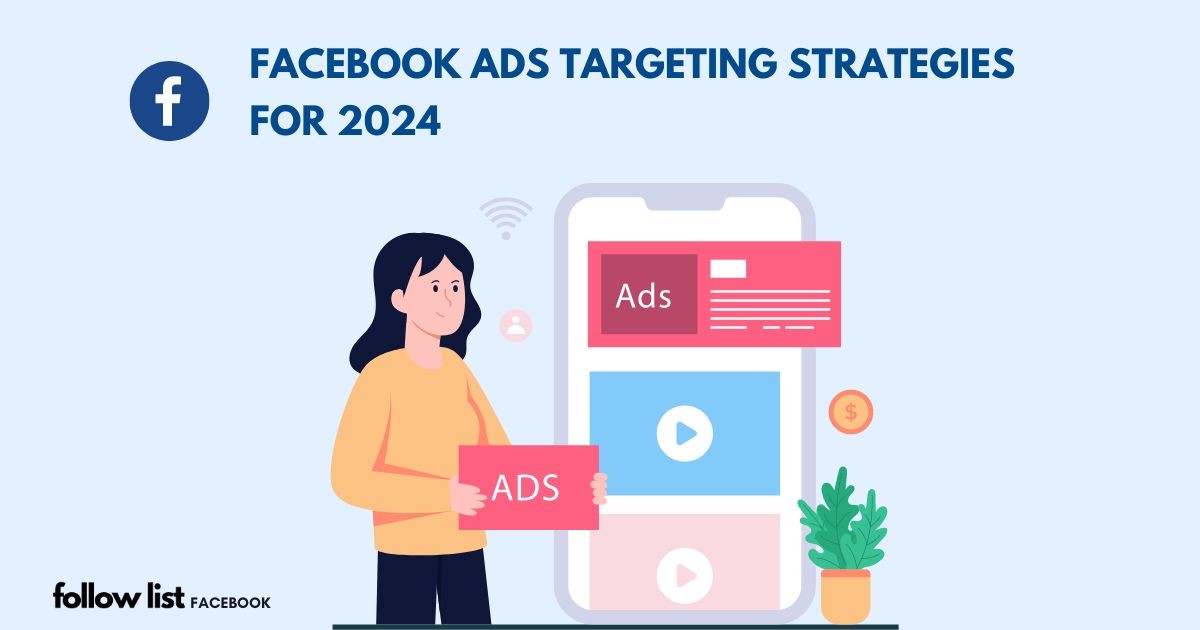
Table of Contents
Listen to this article
New 10 Facebook Ads Targeting Strategies for 2024
Now business owners have understood the power of Facebook ads that have become an integral part of social media advertising, offering businesses and marketers the ability to reach their target audience with precision. With a wide range of audience targeting options, Facebook provides the tools needed to create highly effective ad campaigns.
Before learning the strategies let’s learn the power of facebook in Ads targeting and how facebook actually works in boosting businesses and how it boosts marketing, so that we can make the maximum benefit out of it.
Facebook's ad targeting capabilities go beyond the basic demographic filters, allowing advertisers to refine their audience based on various criteria. Whether you're running Facebook ad campaigns for a small local business or a global brand, understanding and implementing the right targeting strategies can significantly enhance the performance of your ads.
In this article, we will explore the top 10 Facebook ads targeting strategies for 2024
1. Choose your Campaign Objective Wisely:
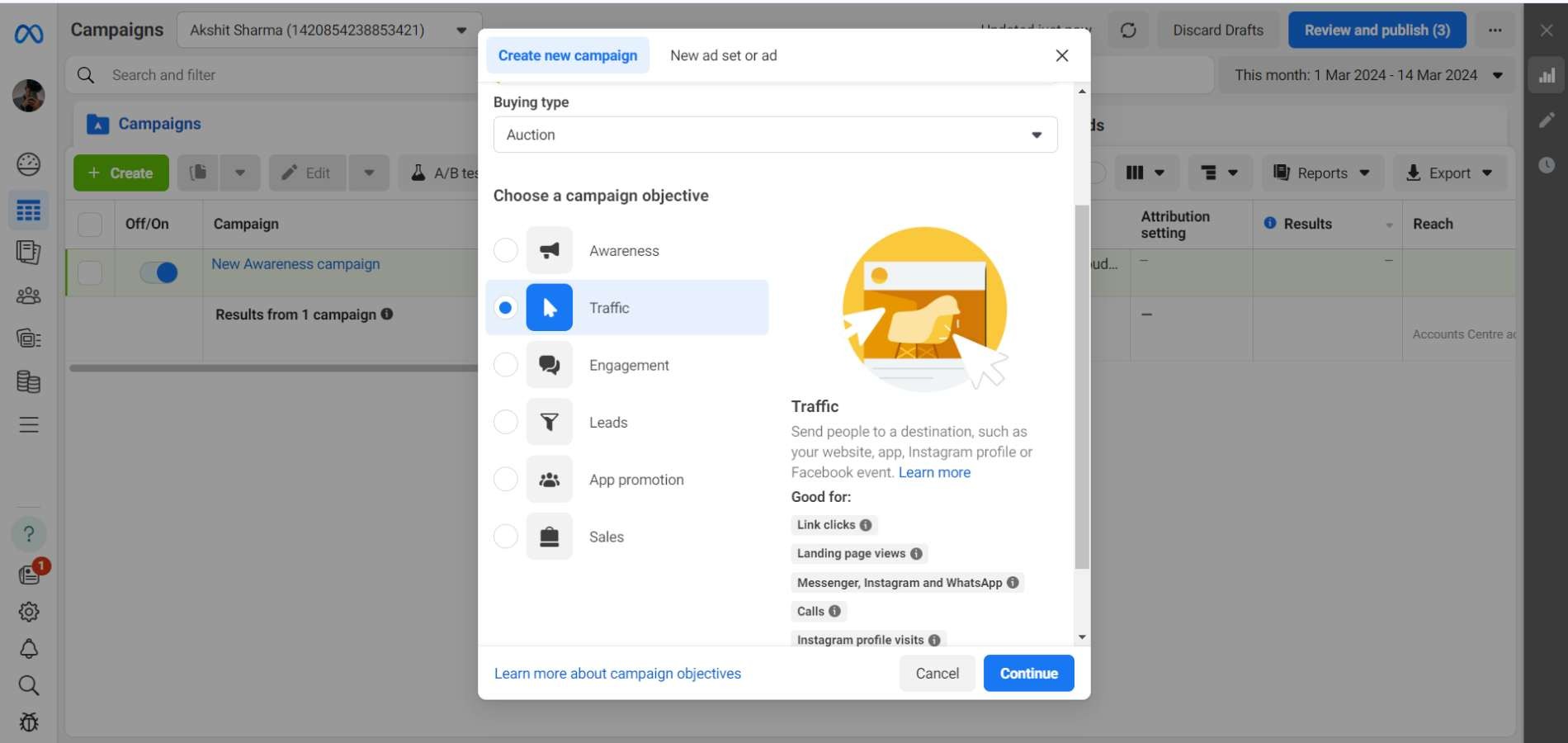
When it comes to running successful Facebook ads, choosing the right campaign objective is of utmost importance. Facebook provides a variety of campaign objectives to choose from, each serving a specific purpose and helping you to achieve different goals.
If your main goal is to increase brand awareness and reach a broader audience, the awareness campaign is ideal. This objective focuses on increasing the visibility and recognition of your brand, allowing you to reach more people and generate interest in your products or services.
For businesses looking to drive traffic to their website or online shops, the traffic objective is their target. This objective aims to attract visitors to your dedicated website, resulting in higher website traffic and potential conversions.
If your aim is to engage with your audience on Facebook, the engagement objective can help you achieve this. This objective encourages users to like, comment on, and share your ads, enabling you to create valuable interactions and build brand loyalty.
To increase app installations and encourage users to download and use your mobile app, the app installs objective is a great choice. This objective allows you to promote your app to your target audience, driving app installations and increasing app engagement.
If you have video content you want to showcase, the video views objective is perfect. By selecting this objective, you can reach users who are more likely to watch your videos, thus increasing video views and engagement.
For businesses looking to generate leads and capture valuable customer information, the lead generation objective is valuable. This objective allows you to create lead forms within Facebook ads, making it easier for users to express interest in your products or services.
If you want to encourage users to have conversations with your business on Facebook Messenger, the messages objective is the way to go. This objective drives conversations with potential customers, allowing you to provide personalized assistance and convert leads.
For businesses with an e-commerce presence looking to drive sales of their products, the catalog sales objective is highly effective. This objective allows you to promote your product catalog directly on Facebook, showcasing items to potential customers and driving sales.
If you have a physical store and want to increase foot traffic, the store traffic objective is the way to go. This objective helps you reach users who are in proximity to your store, encouraging them to visit and make a purchase.
When choosing, it's important to align your campaign goals with your campaign and desired outcomes. Consider the specific objective that will best help you achieve your marketing objectives and drive the results you're looking for.
2. Demographics Targeting:
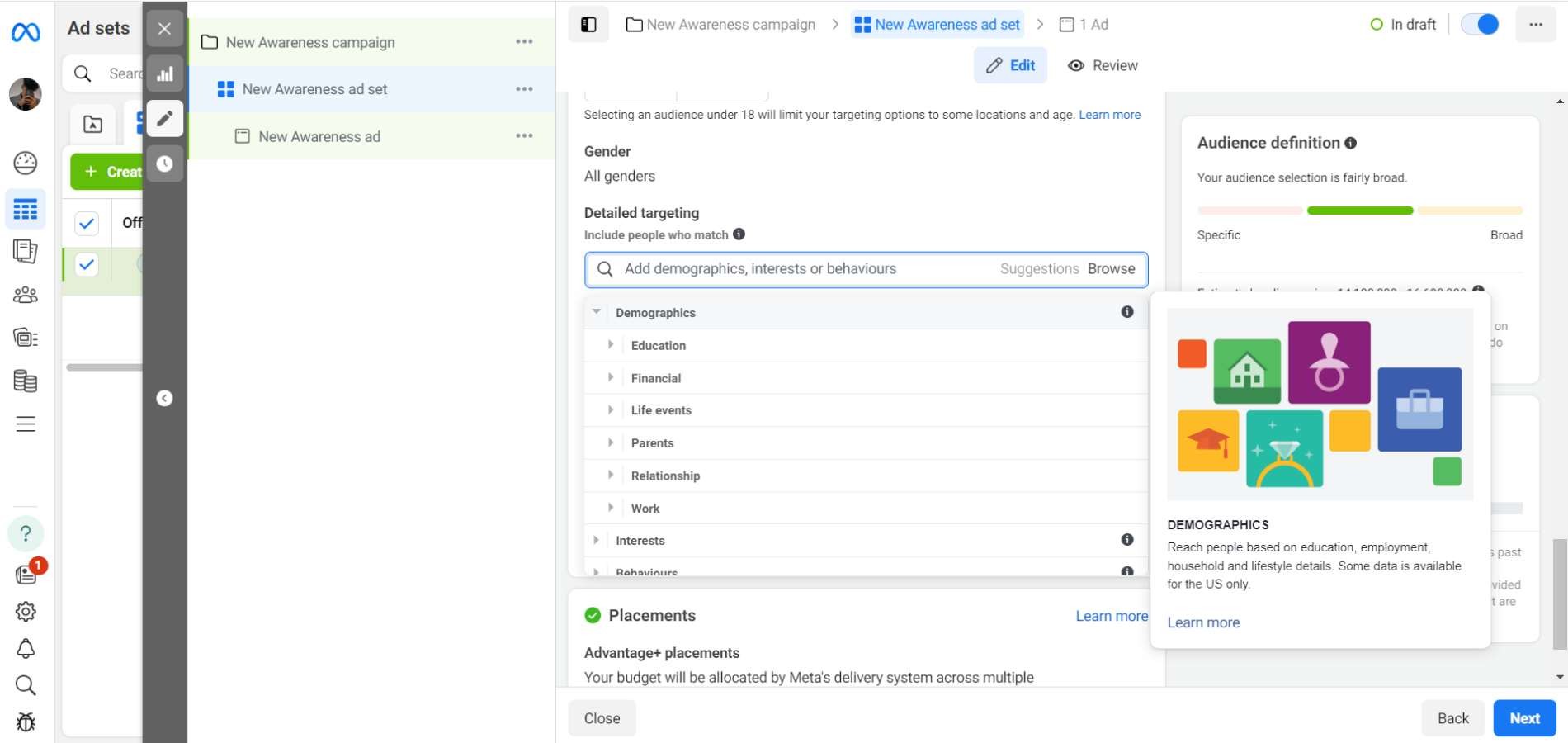
With demographics targeting, advertisers can narrow down their audience using information provided by users in their profiles, such as age, gender, location, education level, and more. By tailoring your ads to specific demographics, you can effectively reach the right people who are more likely to engage with your brand.
This type of targeting is available through the Facebook Ads Manager and is categorized as a core audience type. The information used for targeting is self-reported by users, making it less likely to be impacted by privacy regulations.
Advertisers can further refine their targeting by focusing on lifestyle demographics, which include hobbies, interests, and behaviors. By such targeting, advertisers can reach users who are more likely to update their profiles and engage with certain topics on Facebook.
3. Interests Targeting:
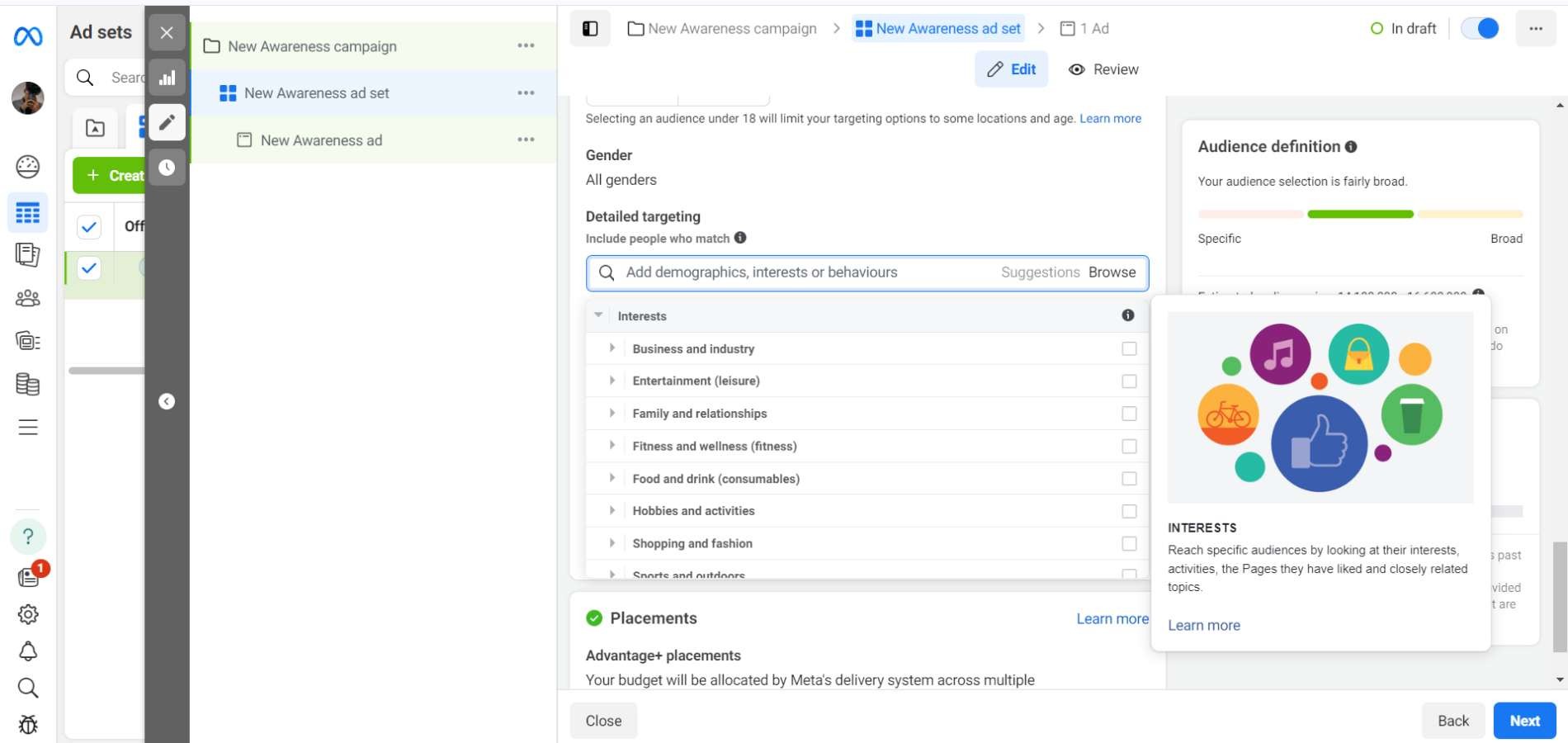
By analyzing the interests and likes of Facebook users, advertisers can reach individuals who have shown an interest for specific topics or products. This allows you to deliver ads that resonate with your target audience's interests, increasing the chances of engagement and conversion.
Facebook collects data on users' interests through their likes, pages they follow, groups they join, and posts they engage with. By targeting users based on their interests, advertisers can deliver highly relevant ads to those who are likely to have a genuine interest in their products or services.
Advertisers can utilize the predefined interest targeting lists provided by Facebook to reach broad categories of users who have expressed interest in various topics. These lists can include interests such as sports, fashion, travel, and more. Alternatively, advertisers can manually input specific interests to create a more targeted audience segment.
4. Behavioral Targeting:
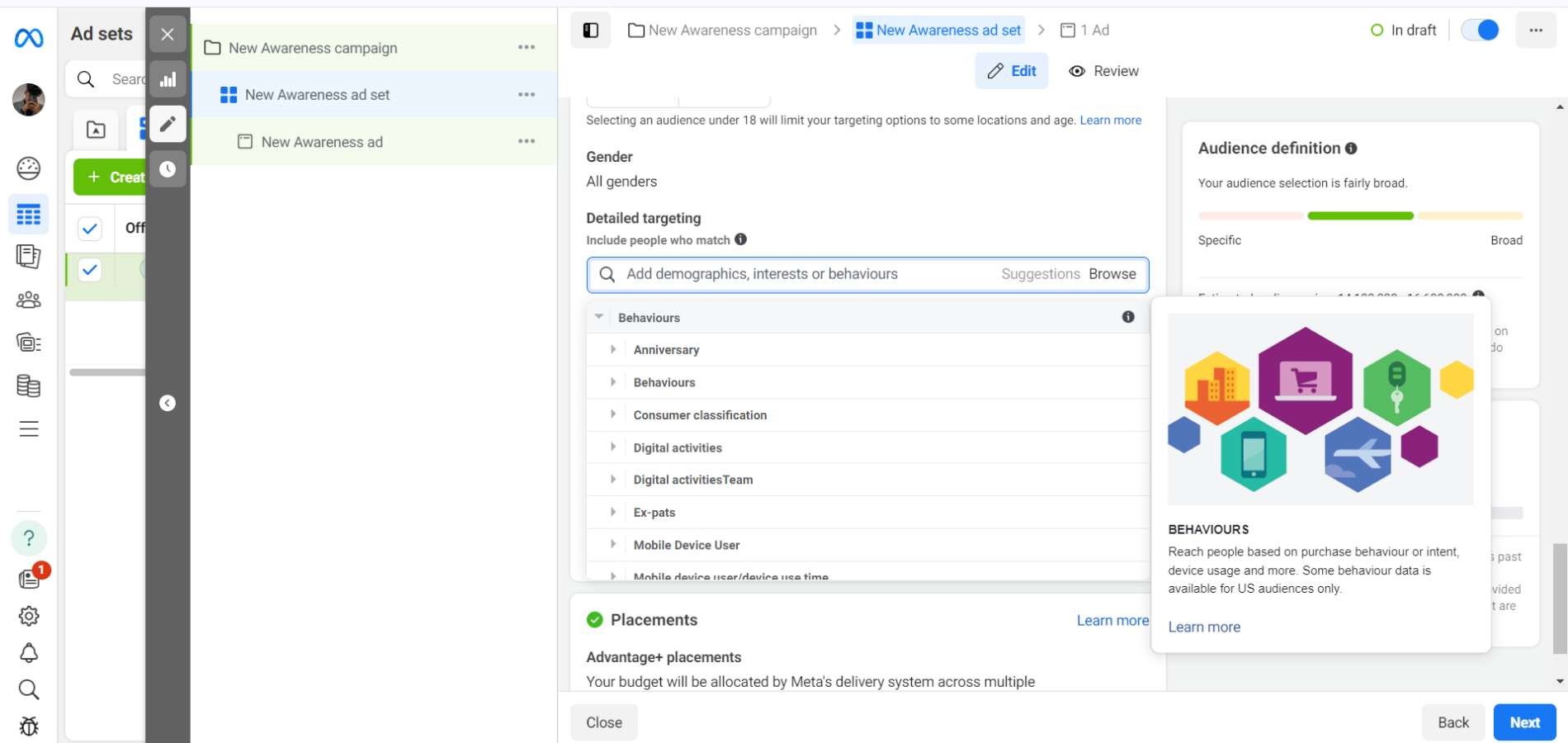
Facebook analytics have the potential to understand the users' online behaviors and activities. This strategy allows advertisers to segment their audience based on actions such as past purchase behavior, device usage, app installations, and more. By targeting users with specific behaviors, you can tailor your ads to their preferences and increase the likelihood of driving conversions.
With behavior targeting, advertisers can segment users based on their interactions with Facebook, Instagram, and Messenger. This includes actions such as liking, commenting, and sharing posts, as well as engagement with ads and pages. By targeting users based on their behavior, advertisers can effectively reach individuals who have shown interest in similar products, services, or topics.
Advertisers can leverage the predefined lists provided by Facebook, which categorize users based on their specific behaviors. These lists can include users who have made purchases, attended events, or interacted with specific types of content. By choosing the appropriate predefined list, advertisers can reach users who are more likely to be interested in their offerings.
Additionally, detailed targeting search allows advertisers to manually search for specific behaviors to target. This enables advertisers to further refine their audience and reach users who exhibit highly targeted behaviors.
5.Use Custom Audience:
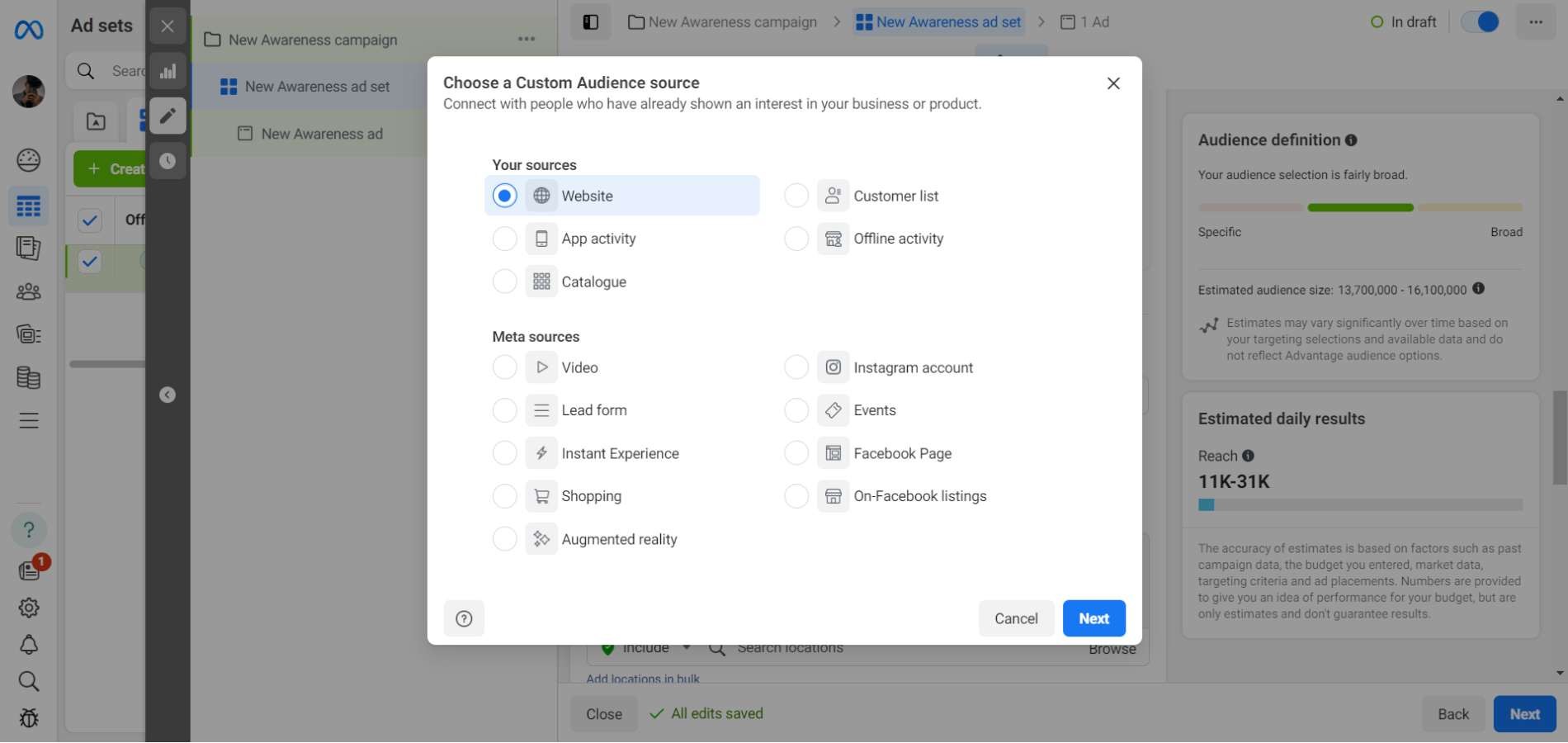
Facebook has its own very large database . While running the ad campaign, facebook offers an opportunity to monetize or bring leads easily using that data base.
Facebook ads manager tools can create custom audiences based on factors such as website visitors, app users, or people who have engaged with your brand on Facebook. This targeting strategy allows you to retarget users who have already shown interest in your brand, increasing the chances of converting them into customers.
6. Leveraging Facebook's Engagement Data:
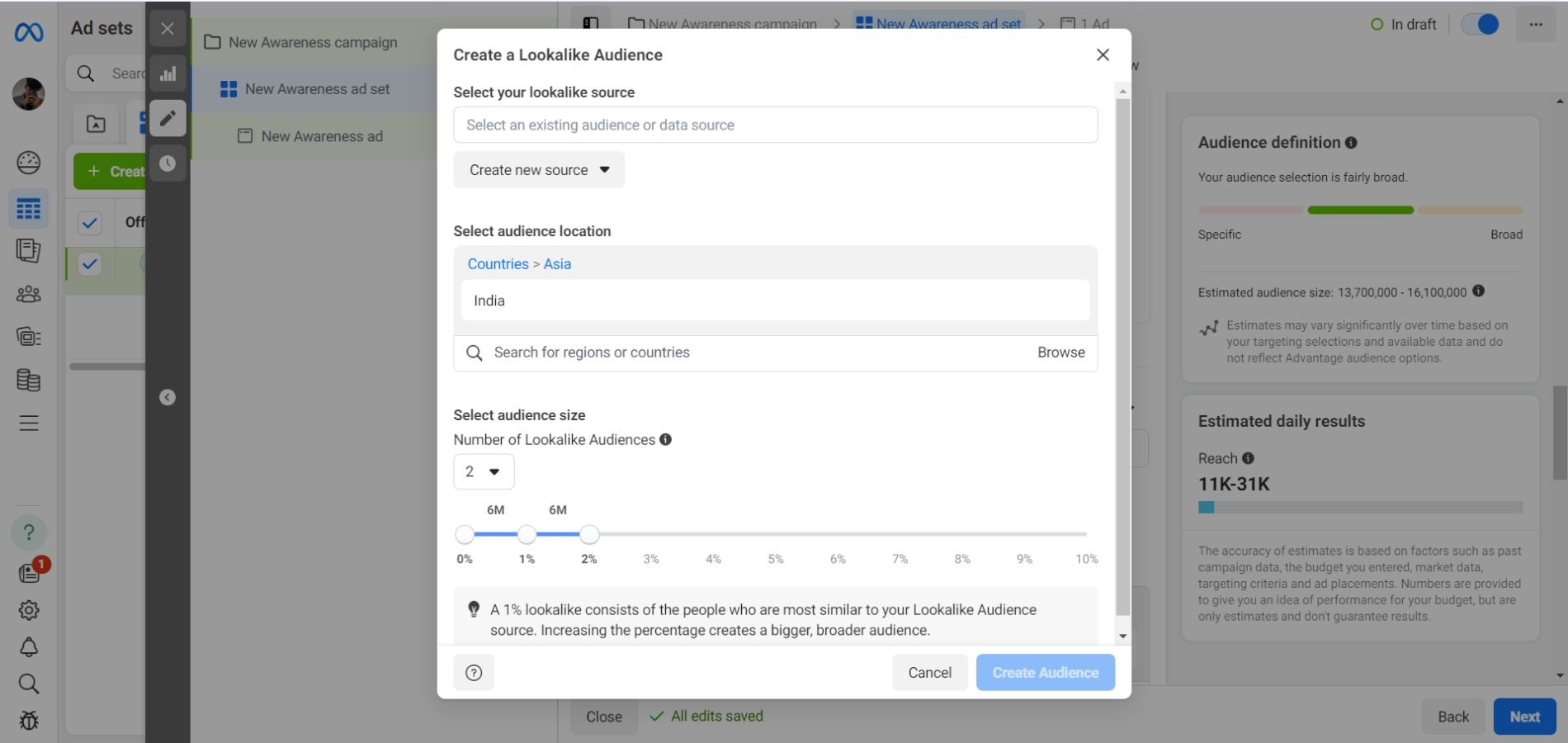
Another method for creating custom audiences is by leveraging Facebook's extensive data on user interactions with other Facebook assets. This includes interactions with Pages, events, and other forms of engagement across the Facebook platform. By utilizing this data, advertisers can target users who have demonstrated specific interests or actions related to their business.
Leveraging Facebook's data offers the advantage of tapping into a vast pool of user information and behavior. This allows for precise audience targeting based on an array of preferences and actions. However, it's important to consider privacy challenges and comply with applicable regulations when using Facebook's data, as recent changes have imposed limitations on data usage and exclusions.
7. Looking for Similar Customers:
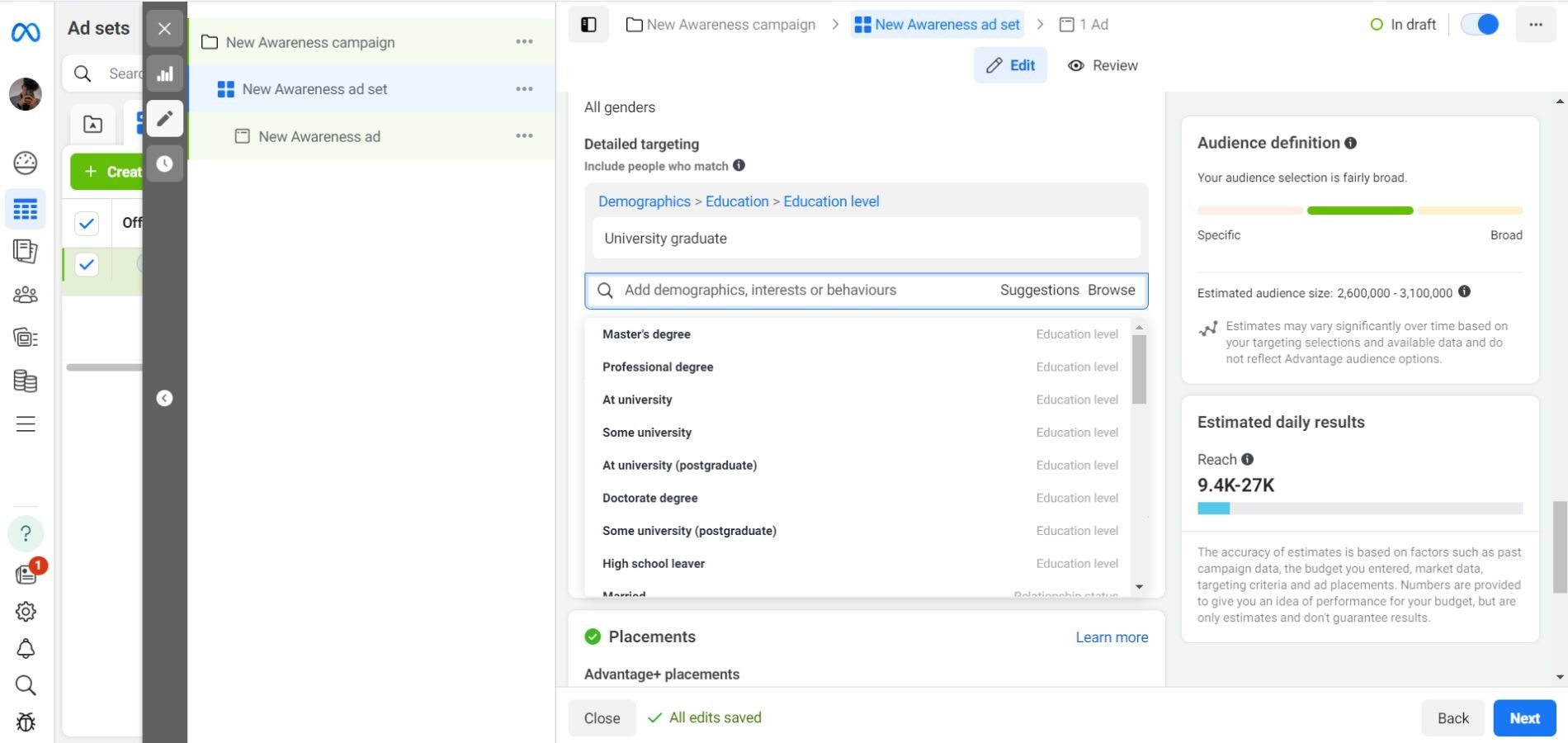
Audiences are a great way to expand your reach by targeting users who are similar to your existing customer base. By analyzing the characteristics and behaviors of your current customers, Facebook can identify users who share similar qualities and interests. This targeting strategy allows you to tap into new audiences that are likely to be interested in your products or services.
8. Interest Stacking:
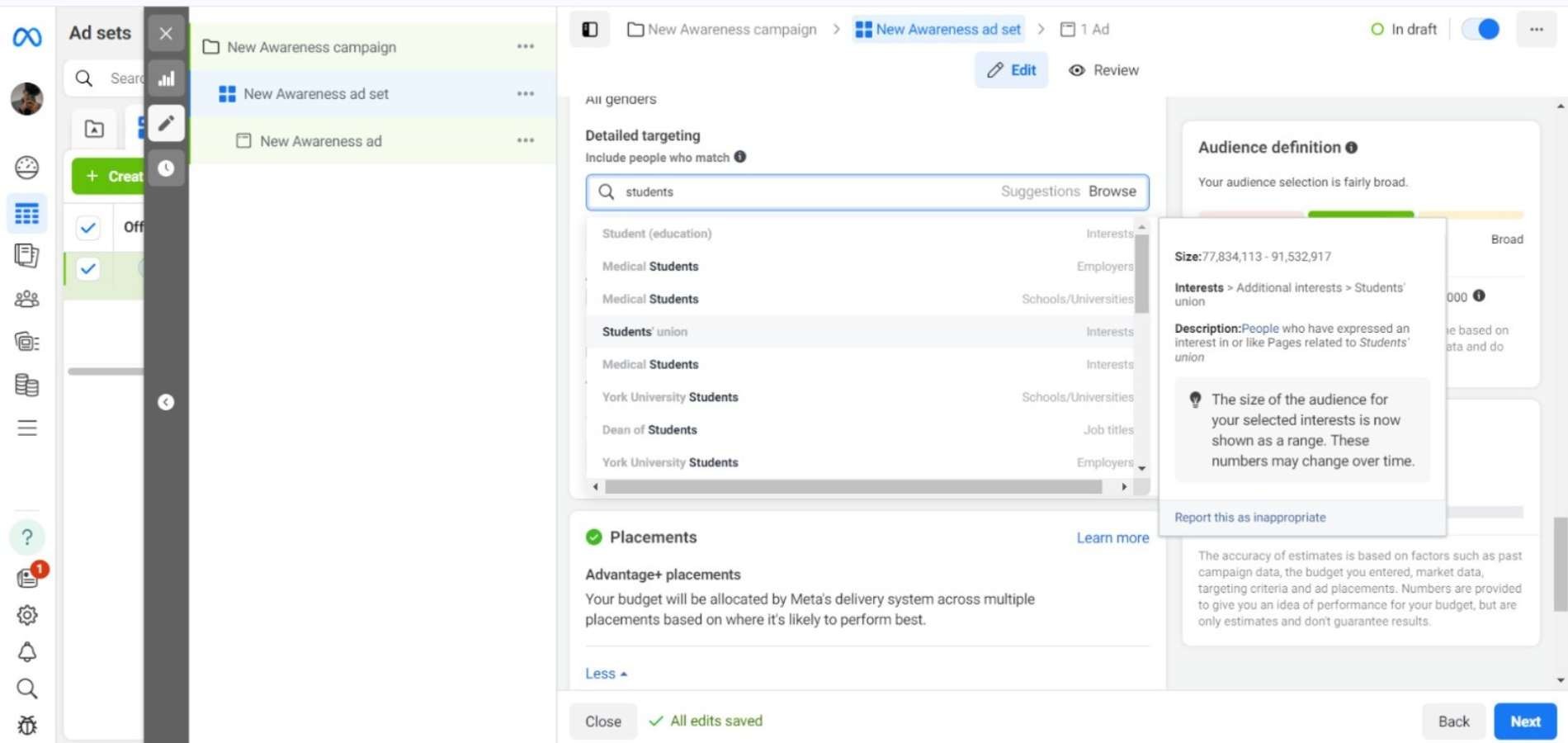
One strategy advertisers can employ to broaden their reach is interest stacking. Interest stacking involves targeting multiple interests within a single ad set, allowing advertisers to reach users who may have diverse interests but still fall within their target audience.
By leveraging interest stacking, advertisers can expand their reach to users who may not fit into a single, narrowly-defined interest segment. This can increase the potential for engagement and conversions, leading to improved ad campaign performance.
9. Retargeting with Your Own Data:
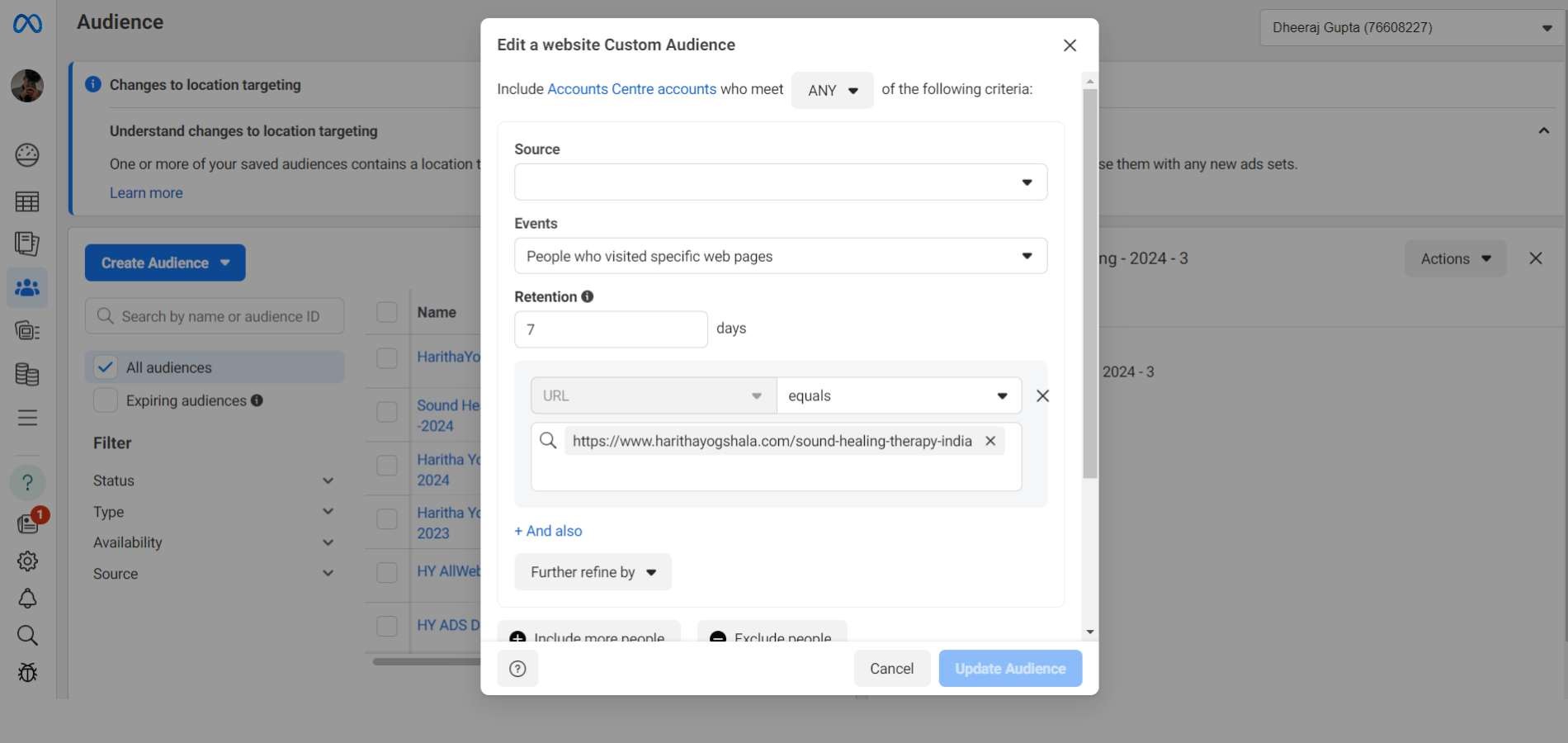
One way to create a custom audience is by using your own data, such as website or app activity. By installing the Facebook pixel on your website or integrating the Facebook SDK into your mobile app, you can collect valuable user data. This data can then be used to create audience segments based on specific behaviors or actions, allowing you to retarget users with relevant ads.
Retargeting with your own data offers several benefits. Firstly, it allows you to re-engage with users who have already shown interest in your brand, increasing the chances of conversion. Secondly, it provides you with more control over your targeting strategy and the ability to leverage first-party data.
Please note: With the ever-evolving landscape of social media advertising, it's crucial to stay updated on the latest Facebook ad targeting strategies for 2024. By implementing these strategies in your ad campaigns, you can maximize your chances of reaching the right audience, driving engagement, and achieving your marketing goals.
While privacy challenges must be considered, implementing these strategies effectively can help advertisers deliver relevant ads that resonate with their target market and drive successful ad campaigns.
10. Privacy-First Facebook Ad Targeting: Terms to Know
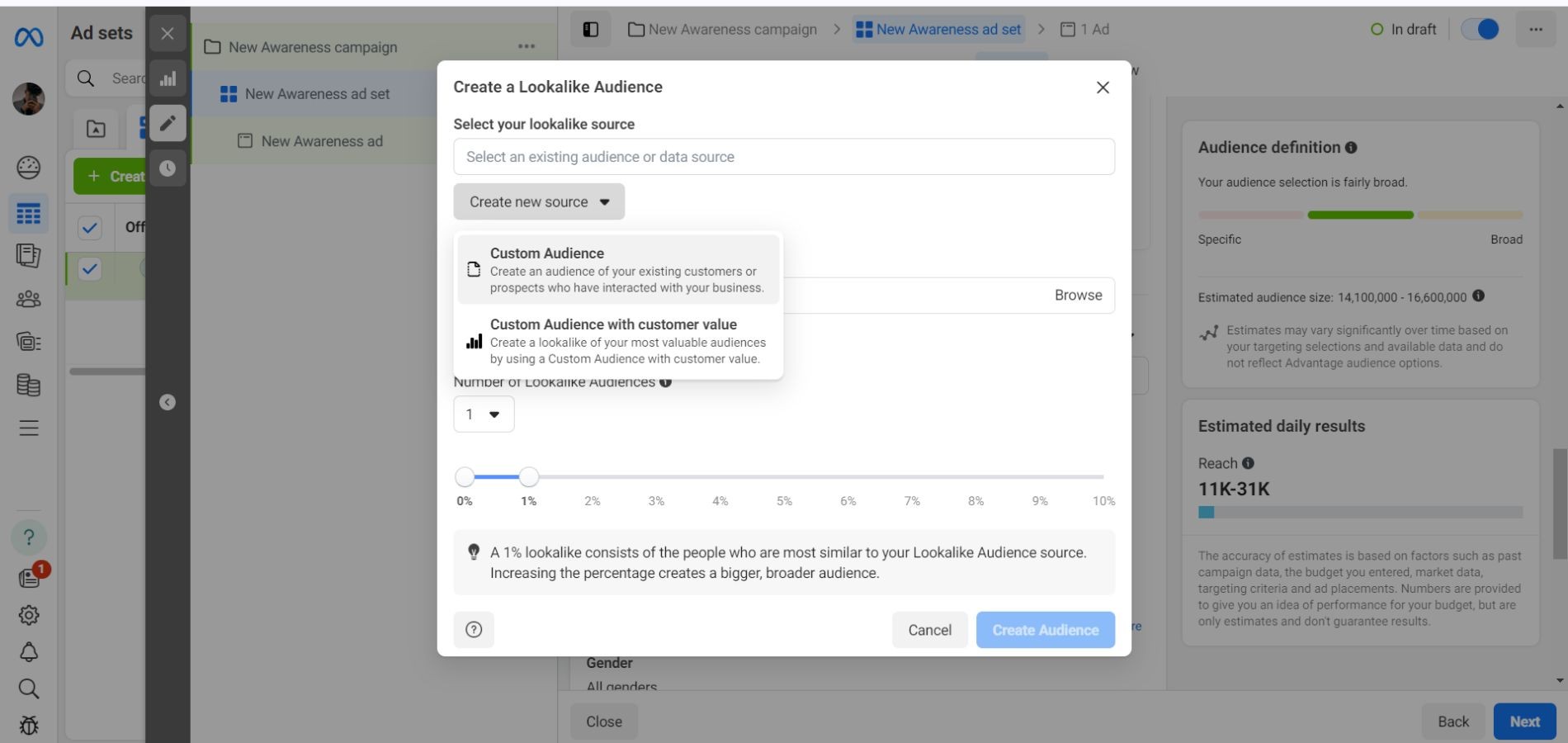
Before diving into the Facebook ads targeting strategies, it's important to understand the terms related to privacy-first targeting. These terms include App Tracking Transparency (ATT), third-party cookies, and the deprecation of third-party cookies by Google. These changes impact how advertisers can track and target users across the web. Understanding these terms will help navigate the new privacy landscape.
- App Tracking Transparency (ATT): This falls under Apple's privacy feature that requires users to give explicit permission for apps to track their data across other websites and apps. It offers the customer more control over their privacy feature.
- Third-party cookies: These are small pieces of code stored on a user's browser by websites other than the one they are currently visiting. They are used to track user behavior and enable targeted advertising, but their use is becoming more restricted due to privacy concerns.
- Deprecation of third-party cookies: Google's decision to phase out support for third-party cookies in its Chrome browser will impact how advertisers can track and target users. This change aims to enhance user privacy and give users more control over their online data.
As privacy regulations evolve and users become more concerned about their online privacy, advertisers need to adapt their targeting strategies to comply with privacy rules and ensure transparency. By understanding these privacy-first terms, advertisers can navigate the changing landscape and develop effective and privacy-conscious Facebook ad campaigns.
Conclusion
In conclusion, implementing effective Facebook ads targeting strategies is crucial for maximizing the performance of ad campaigns. By following a comprehensive approach, advertisers can optimize their targeting strategies and achieve better results.
Firstly, advertisers should invest time in determining their target audience. Understanding the demographics, interests, and behaviors of the target audience enables advertisers to create highly personalized ads that resonate with their potential customers.
A/B testing plays a vital role in improving ad campaign performance. By experimenting with different ad formats, images, headlines, and calls-to-action, advertisers can identify which variations are more effective in capturing the audience's attention and driving desired actions.
Monitoring ad performance and analyzing data is equally important. Advertisers should regularly review key metrics such as click-through rates, conversions, and engagement to identify areas for improvement. This data-driven approach allows advertisers to make data-backed decisions and optimize their campaigns accordingly.
Frequently Asked Questions
Some effective Facebook Ads targeting strategies for 2024 include demographic targeting, A/B testing, study analytics, behavior and interest targeting, custom audience targeting, and choosing the right campaign objective.
Privacy-first targeting refers to the new privacy measures that impact how advertisers can track and target users on Facebook. This includes terms like App Tracking Transparency, third-party cookies, and the deprecation of third-party cookies.
Facebook demographic targeting allows advertisers to target users based on information they provide in their profiles, such as age, location, gender, education level, and more.
Facebook behavior and interest targeting allow advertisers to reach users based on their Facebook, Instagram, and Messenger profiles, as well as their engagement with sites in the Facebook Audience Network.
Facebook custom audience targeting allows advertisers to retarget users who have engaged with their brand. This can be done using their own data, such as website or app activity, or Facebook's data based on interactions with other Facebook assets.


